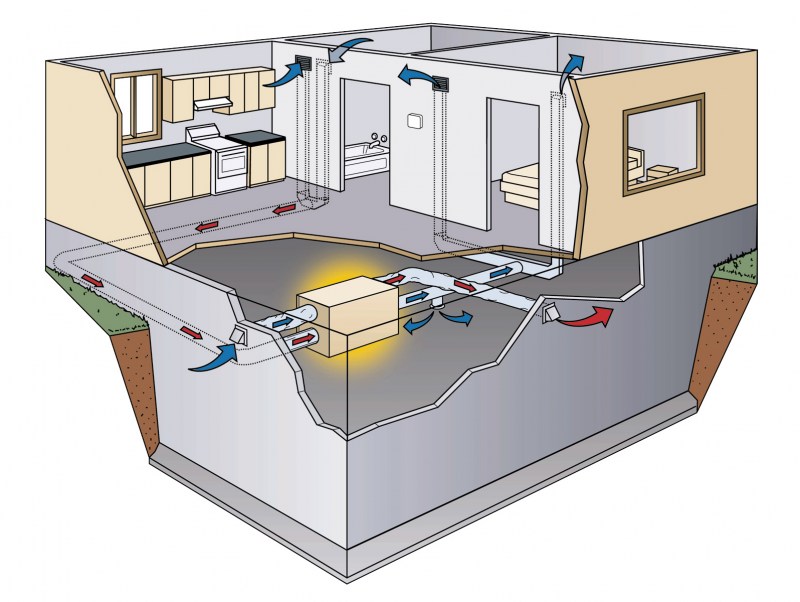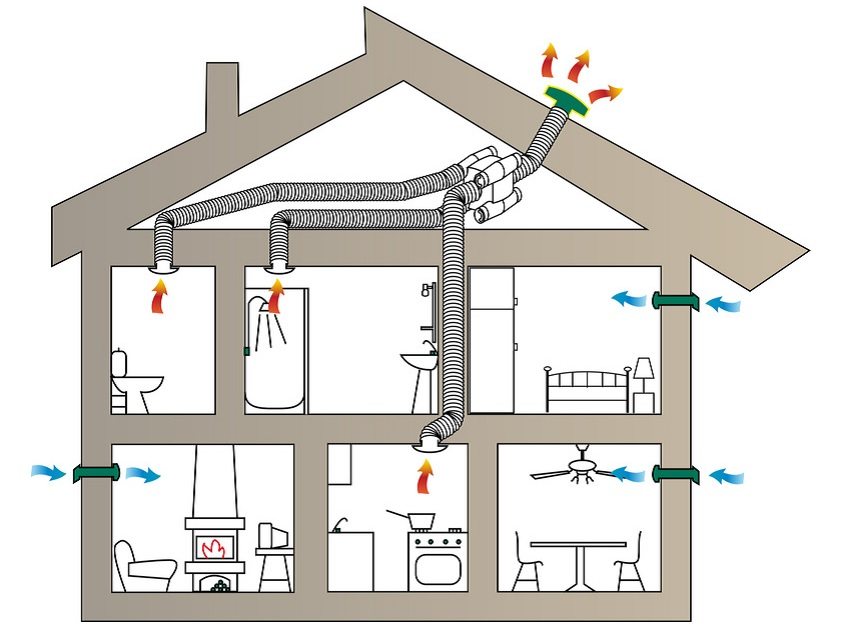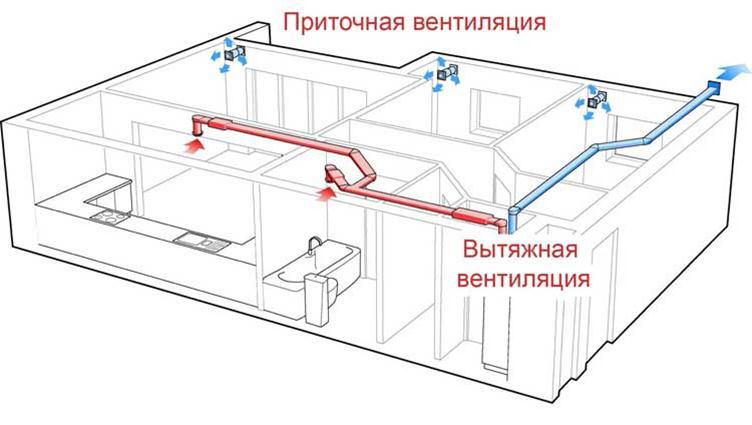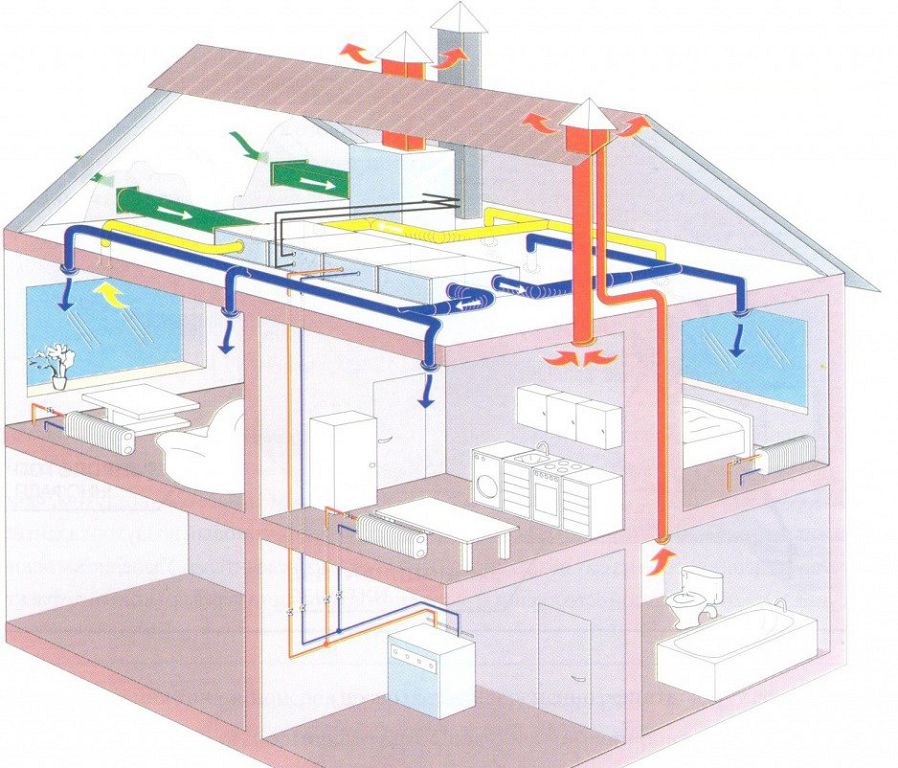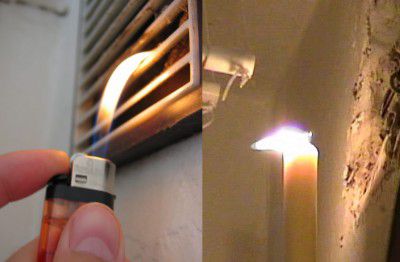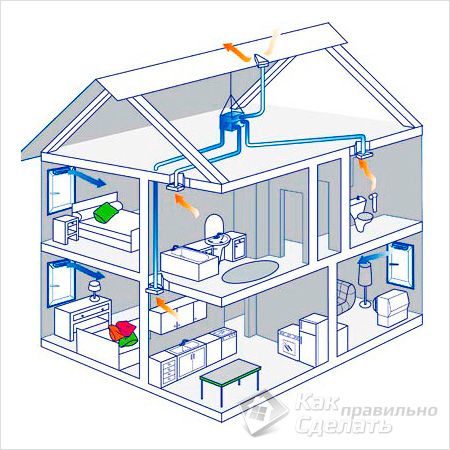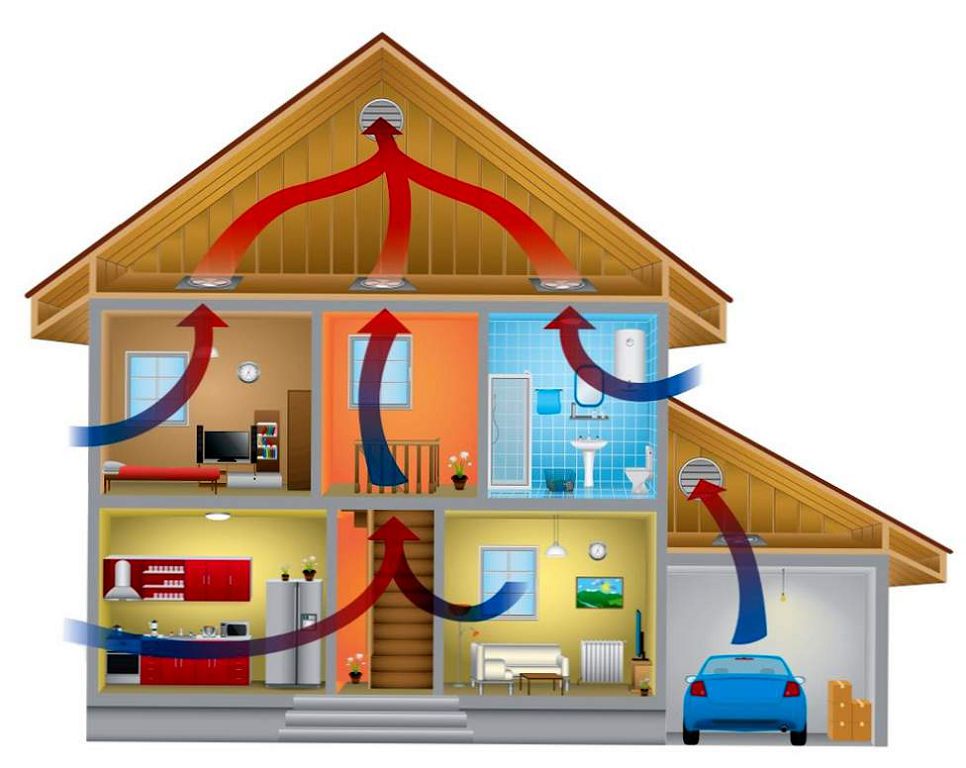Brick is a porous material that does not conduct heat well. In winter, it effectively retains heat inside, and in summer it does not let heat into the house. But to provide a comfortable atmosphere in a brick house is possible only by creating an artificial ventilation system.
Cons of natural ventilation of a brick house
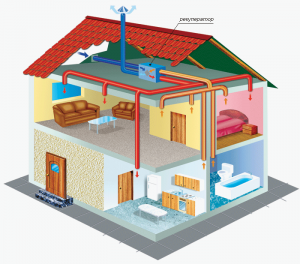
Natural ventilation in a brick house is equipped by ventilation through the vents, installation of ventilation ducts in the toilet, bathroom and kitchen. Along with the air, dust, allergens enter the house, ventilation ducts become clogged with dust after several years of use and their efficiency is significantly reduced. In addition, the intensity of draft through the ventilation ducts depends on the air temperature outside and in the house. Therefore, only forced ventilation in a private brick house works smoothly and without interruption.
Forced ventilation in a brick house
In addition to the flow of clean air, a well-designed ventilation scheme in a brick house maintains humidity at an optimal level, preventing the development of fungus. The best ratio in atmospheric air is: 20 percent oxygen to 0.3 percent carbon dioxide with a humidity of 40 - 60 percent.
Of course, there should be no dust or poisonous components in the air. However, not a single natural ventilation scheme in a brick house is able to keep these indicators at the same level. Therefore, they resort to artificial ventilation in a brick house.
Types of ventilation systems for brick houses
- Exhaust - it removes air from the premises. Such a system has a significant disadvantage: how to replenish the air supply in the house? With the help of well-functioning natural ventilation;
- Supply and exhaust - works on the principle of oncoming air jets. That is, through one air duct, air is sucked out, at the same time, on the other, it is supplied to the premises.
The positive aspects of using supply and exhaust ventilation are that it is possible to install any type of filters on the inlet pipe. The air is supplied already cleaned of dust, allergens, unpleasant odors, gases.
Lack of ventilation in a private brick house leads to an increase in humidity, which contributes to the development of mold and mildew. Dust mites develop in stagnant air. Residents of the house are more likely to suffer from colds and allergic diseases. That is why the installation of ventilation systems should not be neglected.

